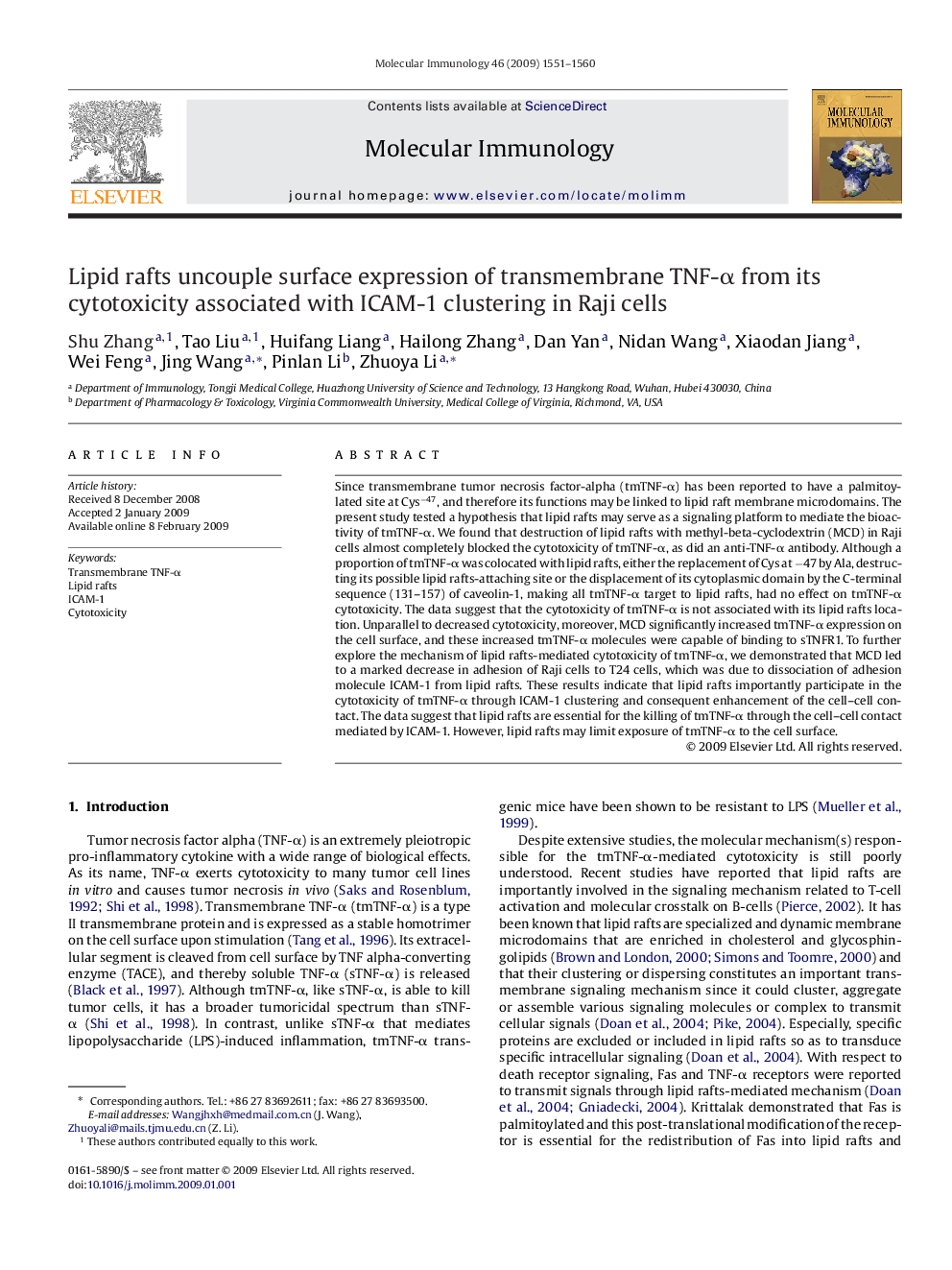| Article ID | Journal | Published Year | Pages | File Type |
|---|---|---|---|---|
| 5917918 | Molecular Immunology | 2009 | 10 Pages |
Abstract
Since transmembrane tumor necrosis factor-alpha (tmTNF-α) has been reported to have a palmitoylated site at Cysâ47, and therefore its functions may be linked to lipid raft membrane microdomains. The present study tested a hypothesis that lipid rafts may serve as a signaling platform to mediate the bioactivity of tmTNF-α. We found that destruction of lipid rafts with methyl-beta-cyclodextrin (MCD) in Raji cells almost completely blocked the cytotoxicity of tmTNF-α, as did an anti-TNF-α antibody. Although a proportion of tmTNF-α was colocated with lipid rafts, either the replacement of Cys at â47 by Ala, destructing its possible lipid rafts-attaching site or the displacement of its cytoplasmic domain by the C-terminal sequence (131-157) of caveolin-1, making all tmTNF-α target to lipid rafts, had no effect on tmTNF-α cytotoxicity. The data suggest that the cytotoxicity of tmTNF-α is not associated with its lipid rafts location. Unparallel to decreased cytotoxicity, moreover, MCD significantly increased tmTNF-α expression on the cell surface, and these increased tmTNF-α molecules were capable of binding to sTNFR1. To further explore the mechanism of lipid rafts-mediated cytotoxicity of tmTNF-α, we demonstrated that MCD led to a marked decrease in adhesion of Raji cells to T24 cells, which was due to dissociation of adhesion molecule ICAM-1 from lipid rafts. These results indicate that lipid rafts importantly participate in the cytotoxicity of tmTNF-α through ICAM-1 clustering and consequent enhancement of the cell-cell contact. The data suggest that lipid rafts are essential for the killing of tmTNF-α through the cell-cell contact mediated by ICAM-1. However, lipid rafts may limit exposure of tmTNF-α to the cell surface.
Related Topics
Life Sciences
Biochemistry, Genetics and Molecular Biology
Molecular Biology
Authors
Shu Zhang, Tao Liu, Huifang Liang, Hailong Zhang, Dan Yan, Nidan Wang, Xiaodan Jiang, Wei Feng, Jing Wang, Pinlan Li, Zhuoya Li,
